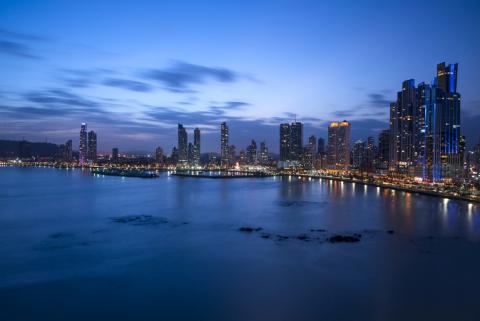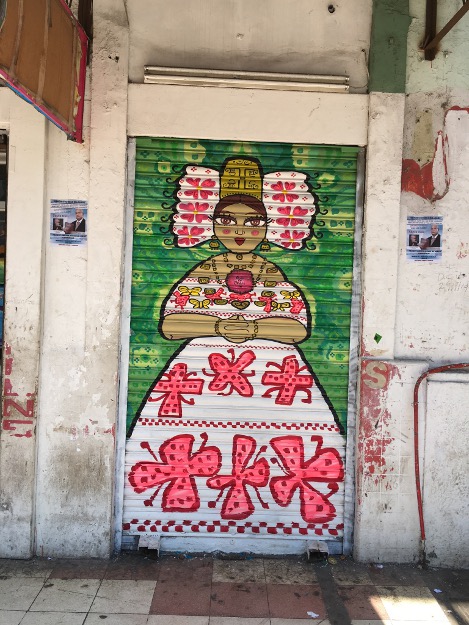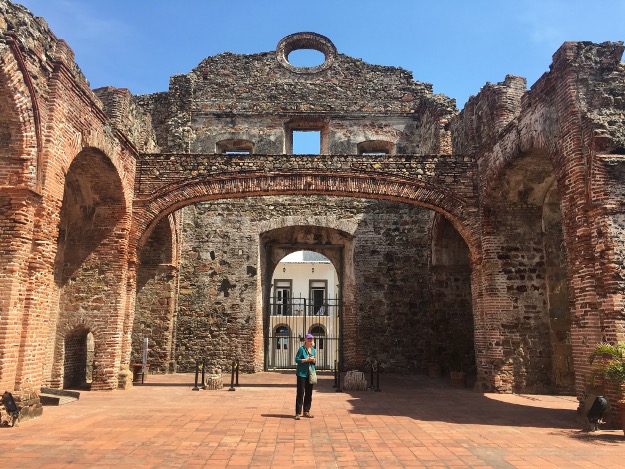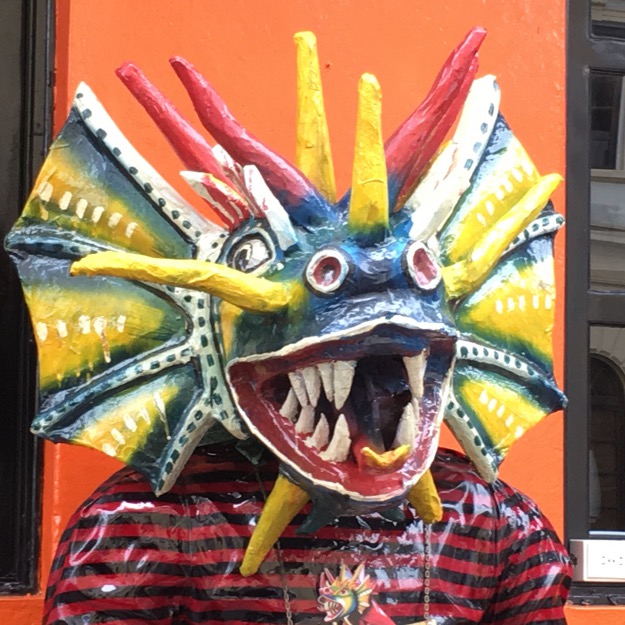A Visit to Panama

Three destinations? Two sounds like enough. But spending a month in the colorful and sometimes contentious country of Colombia and not making a side trip to the Panama Canal, would be a little like opting for Las Vegas and its desert environs and skipping the Grand Canyon.
Besides, not so long ago, the two countries were one. Then when Colombia refused to ratify the U.S/France 1902 agreement, allowing the United States to continue construction of the historic waterway, the Panamanians loudly revolted. With President Theodore Roosevelt’s hearty approval and nudging, Panama gained its independence and Roosevelt gained a few thousand workers. But more about the trip through the Canal will follow.
Immediately upon our Copa Airlines arrival, we settled back in our prearranged taxi to enjoy the looming skyline of Panama City. It was a warm mid-July night and already the towering skyscrapers were ablaze in all their nocturnal glory. After all, this is ground zero for the global banking empire. Even president Juan Carlos Varela’s attempts to hire a commission last year to create more fiscal transparency may find insurmountable difficulties. Elite lawyers and familial ties run deep.
Hardly our concern. We were simply two reasonably experienced women travelers, filled with insatiable curiosity, but on a teacher’s budget nevertheless. The centrally located Royal Sonesta Hotel fit the bill. And what a treat to discover the sumptuous buffet breakfast that followed the next morning. Starched and smiling waiters were on hand to prepare omelets while we inspected a long row of braziers filled to the brim with spicy sausages, seasoned potatoes and plantains. Yogurts and grains of every variety were a given, but it was the generous array of fresh juices that impressed us the most—tropical fruits with names too exotic to recount. And whether café sol or café con leche, the bean never disappointed.

We quickly discovered the new air-conditioned metro system—a single line completed in 1914 that we hopped aboard to get within minutes to Casco Viejo, or the Old Quarter. Founded in 1673, the original settlement was built on a peninsula with defensive walls, completely isolated by the sea. (It’s interesting to note that its original construction in 1519 was set on fire in 1671 by its governor before the planned attack by pirate Henry Morgan. A new city on the same site, supervised by Antonio Fernandez de Cordoba, was founded two years later.)
Before reaching the historic churches, palacios and the Panama Canal Museum on our itinerary, we took a stroll down the main market street that fronts the old quarter. This is an experience that almost defies description. Beggars and hawkers squabble outside their improvised tents, while a young boy sleeps atop a wagonful of produce. Embera Indian women in colorful if worn costumes gossip in small clusters, seemingly impervious to the hot midday sun. The streets here and elsewhere are filled with potholes, the curbs a disjointed and crumbling affair requiring hawkish attention to avoid falling. Nevertheless, it’s a photographer’s paradise, the street walls alive with occasionally beautiful artworks amidst the graffiti.
Stepping inside the cool recesses of the Panama Canal Museum, we encounter enough richly drawn displays to easily occupy an afternoon. Life in the “zone” holds the greatest fascination, with elaborate menu cards prepared for the first wave of American officers and their wives. We learn that a small cup of quinoa followed dinner as an antidote to malaria, a major killer. To wile away the idle hours, an escuela de pintura was even established in 1915 for the women painters in the zone, disbanded upon the return to their home country. A January 1964 cover of Life Magazine features violent student protests against U.S. presence, which led to the death of 21 Panamanians and four American soldiers—Martyr’s Day is still observed today. The official transfer of the canal to Panama didn’t occur until President Carter’s administration.

Ducking inside a cozy luncheonette off the main square from the gathering rain, we agree upon ceviche and a cold Balboa beer break. Attempting casual conversation, even if you trust your rudimentary Spanish skills, can be an “iffy” proposition. When I remark that there were “mucho huevos hoy” to the cashier, I was quickly chastised by my traveling partner Joanne that it wasn’t many eggs today falling from the skies, but mucho lluvia or rain.
While planning a trip to Panama, it’s essential to pack a poncho and even umbrella as the annual rainfall is 16 feet. It’s after all the wet season in July and August—but in Panama the skies break open daily.
Thankfully, a cobalt blue morning followed, leaving no question it was time to visit the well-touted Biodiversity Museum. Designed by the world-famous architect Frank Gehry,, it was his first gift to Latin America, his own wife a native-born Panamanian. It’s difficult not to be filled with a childish wonder at the colorful slapdash effect of the structure on the landscape. Eight exhibitions capture the imagination, with innumerable hands-on demonstrations to hold the interest of visitors of all ages.
A leisurely walk along the Amador Causeway was in order, the entrance a short hop, skip and jump from the museum. Originally designed as the canal’s Pacific breakwater, it snakes six kilometers out into the bay and links the mainland with a series of tiny islets looming up from the turquoise waters. Park benches and tall swaying palms line the pathway, offering beautiful natural views for the snapshot hungry visitor. Bike rentals as well are available along the stretch, as well as casual dining amidst a flock of black grackles picking crumbs from the nearby tables.

The Panama Canal – A Path to Join the World
A short trip to the Miraflores Locks (one of three sets of locks along the canal route) was an exciting prelude to the all-day canal boat trip we’d reserved months in advance. Panamax barges, designed to fit inside 110 feet wide locks with only inches to spare slide through at a snail’s pace. On the opposite side, a row of locomotives or “mules” run alongside bankside rails to steady the ships, each replete with a series of cables connected to the vessel. These train cars may resemble a WWII army tank but anchored to their rails, they do a first class job. A recently completed expansion is expected to double the waterway’s capacity, and is the largest project undertaken since the canal’s original construction.
We’d opted for a ride to Miraflores on one of the city’s retired school buses for 35 cents. These conveyances are referred to as “red devils” and this nomenclature couldn’t be more apt. The leather seating was so cracked, it might as well have been a prehistoric animal hide dredged up from one of the first canal excavations. The front dashboard was festooned with bobbing cartoon character balloons, one caricature—you guessed it—a grinning red devil.
Enjoying a rum cooler from one of Miraflores’ observation decks, is the perfect time to consider one of the world’s most astounding engineering marvels. From the Miraflores’ or Pacific sea level end, a concrete water elevator lifts the barge 54 feet up from inside the lock, with a total of 26 million gallons of water flushed into the space. A similar process is repeated at ensuing locks until the ship is raised 85 feet above sea level, thereby level with Gatun Lake, an artificial man-made body of water which the vessel traverses until the next series of locks. From this juncture, the remaining locks are drained, the ship now lowered until it is level with the Caribbean or Atlantic side. Not an easy feat.
The actual idea for such a canal dates to the 16th century, when the explorer Vasco Nunez de Balboa discovered the Isthmus of Panama was no more than a slim bridge separating the two oceans. A serious attempt wasn’t made until the 1880s when a French company attempted to build the canal at sea level, minus the locks, like the Suez Canal. By the time the French effort went bankrupt, the cost was over $260 million. The worst outcome was the death of more than 20,000 workers. After the United States Congress authorized the purchase, another 5600 workers would die through accident or disease.
Thanks to mankind’s vaulted ambitions, between 13,000 and 14,000 ships use the canal every year. For more than 160 countries around the world, it is no longer necessary to navigate around the Drake Passage and Cape Horn, saving over 7,000 miles of the journey.
Our heads filled with such mindboggling facts, we were ready to board our tour boat for the real deal, as they say.
After a predawn taxi ride to dockside, we joined a cluster of international tourists as anxious as we were to board. We began with a pleasant cruise under the stately Bridge of the Americas, watching wordlessly from the stern as the huge gates, looking more like a medieval pen for wrongdoers, closed behind us. The water spouts opened—a thunderous gush that lifted our boat upwards—a heart-quickening experience.
Once through the next series of locks, we were ready for a generous lunch of baked chicken, rice and sweet plantains. Making a brief stop at the Gatun Lake port to let off the half-day passengers, our guide pointed out a nearby crane of magnificent proportions. “Herman the German” we were told was one of four such cranes bombed by the Allies in WWII. When the war ended, the three surviving ones were requisitioned by the British, the Russians and the U.S, with a purchase price of one dollar. “Herman” was later used by none other than Howard Hughes to lift his unwieldly Spruce Goose plane out of the water.
You’ll remember the Panamanian rains I mentioned earlier? Within minutes of our leaving port for the last series of locks, the heavens opened, sheets of water blinding our view of the opposite shore. But our guide was a friendly, chatty sort, moving among the decks and filling us in on some of the more salient points. For the typical container ship, fuel may run to $100,000 per day. Considering a trip around Cape Horn may require 16 days longer than opting for the canal route, it’s no bargain. “Just do the math,” he laughed. “The canal is a big savings.”

I would be remiss if I didn’t mention a few of the other highlights of our Panama sojourn. A guided tour to the Embera Indian Village and a rigorous hike to a pristine rainforest waterfall would have rated a 10 for me—if not for the muddy trek from yesterday’s rains. Jerin, a hearty, red-haired fellow from Springfield, Missouri who married a Panamanian girl during his college days, kept us in good humor for the entire trip.
Reaching our first destination by car, we descended a sheer grade of steps to our motorized dugout canoe. Heading up the Chagres River, Jerin’s helpmate wielding a long pole from the bow, we wound our way past dense jungle lining the banks. Reassured that no ‘crocs’ would attack our feet, we carefully forded the shallow river at a designated spot and began our ascent, followed by a 20-minute rest beside the waters of a promised waterfall.
Back in our canoe, I was content to take a few pictures before another uphill climb to the Embera tribe’s compound. They had not only prepared delicious grilled chicken and plantains but performed on drums and flutes while we ate. A little girl no more than 6 took my hand afterwards and led me in a circle dance under a gigantic tent. Another young tribesman was on hand to draw washable tattoos on our forearms.
The setting for their village was pastoral perfection, but Jerin was quick to educate us on the ongoing challenges they face to their continuing existence. Now under the auspices of a national park administration, they are no longer allowed to cut down branches from the coca bola tree for their hardwood crafts or fish for sustenance. They can use what branches are found on the forest floor, while the women continue to make jewelry and produce basketry to take to market in Panama City.
A two-hour drive by bus to El Yunque in the thick of the rainforest was another adventure. After a mile walk to a local zoo, where we got a close up view of Panama’s own golden frog, we emerged rain-soaked but happy. All of our explorations were not as physically demanding, however. Casco Viejo’s charms were many, with its colorful squares and pastel painted mansions, everywhere ongoing construction for those who can afford to live in the fabled zone.
A surprising art exhibit we attended during one of these forays was in honor of Venanci o Diaz, the chief photographer to Fidel Castro. His small living quarters in Havana had been recreated, replete with his favorite Pentax camera, cigar butts strewn on the kitchen table, passport laid open, shelves filled with old coffee tins, oil lanterns and a ‘40s GE table fan, and, of course, photographs with Castro cronies lining the walls.
Two favorite standout meals must be mentioned, both at Peruvian style restaurants. At Machu Picchu, Beef tenderloin was cooked to perfection in a green tomatillo sauce with cilantro and potatoes, boiled or mashed. The other dining delight was at Nasca in the old section, with a similar cuisine and colorful posters to pause at.
Just remember—if the fun and food of Bogota and Cartagena is on your agenda, an affordable side trip to Panama is well worth considering—just don’t forget your poncho.
Part Two of this trip will appear next month.
Author Bio:
Sandra Bertrand is Highbrow Magazine’s chief arts critic. She also writes frequently about her travels.
For Highbrow Magazine
Photo credits: Sandra Bertrand; Joanne Drapiewski; Depositphotos.com.




























































































































































































































































































































